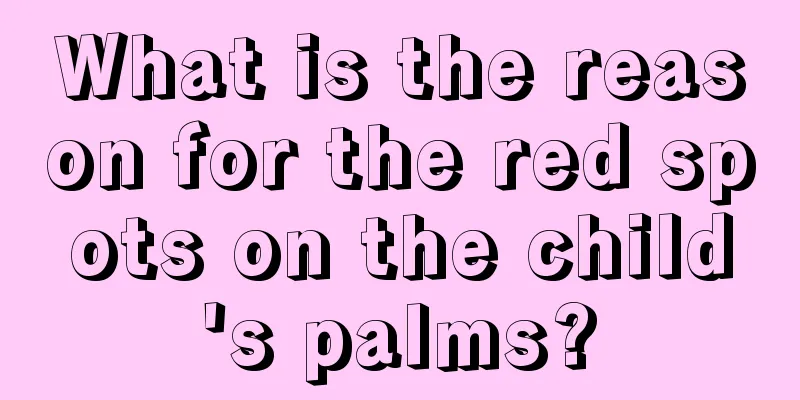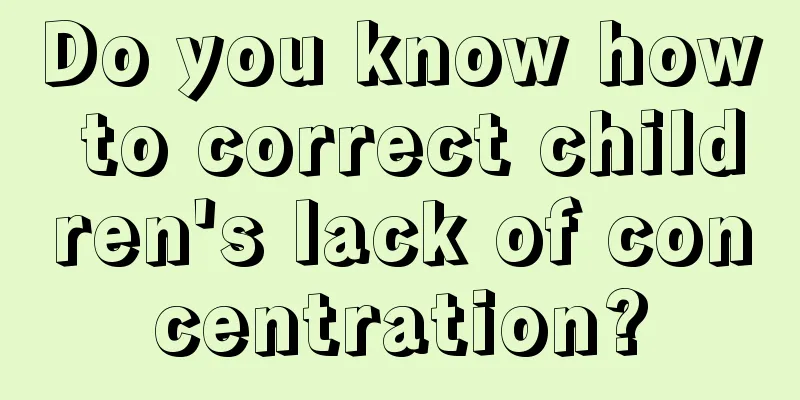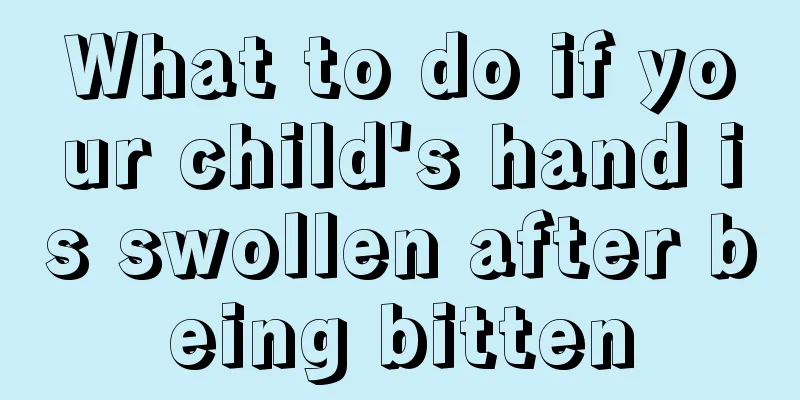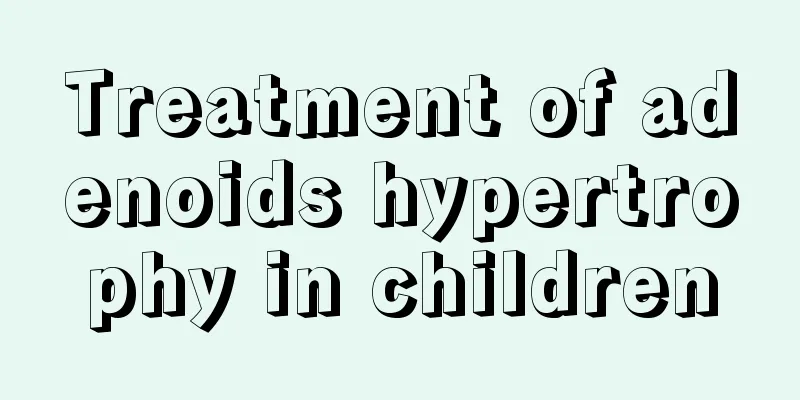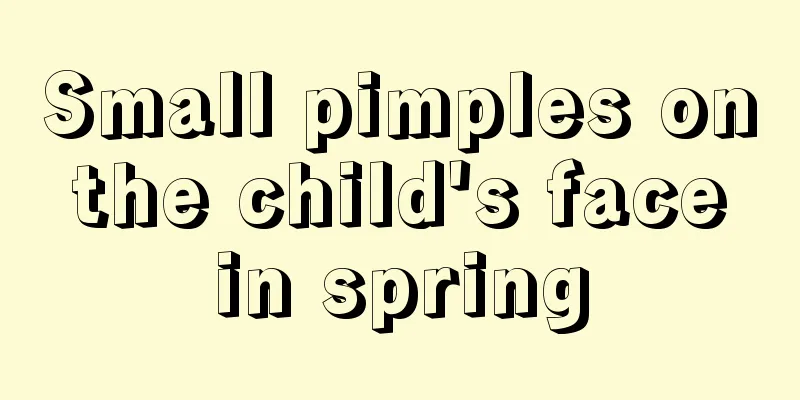Can an inguinal hernia in children heal on its own?
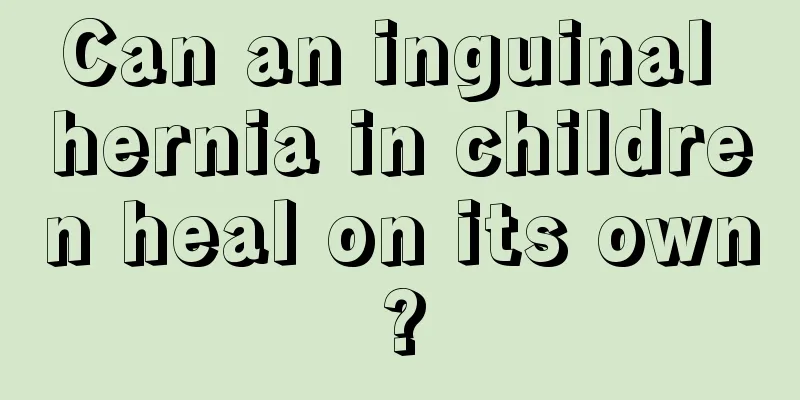
|
Inguinal hernia is a congenital developmental abnormality and a relatively common disease in pediatric surgery. A lump will appear in the groin area of a child shortly after birth. The incidence rate is relatively high in males, and the best treatment is surgery. It cannot heal itself without treatment. Parents should pay attention to it to avoid harming the healthy development of their children. The best treatment for inguinal hernia in children is surgery. The best time to perform surgery is after 6 months. However, if an incarcerated hernia occurs, surgery should be performed early to prevent repeated incarceration and serious consequences. 1. Non-surgical treatment When children under 6 months old are not suitable for surgery due to serious illness, they can be temporarily treated with hernia belt therapy in the hope that they will heal on their own. The method is to first return the hernia contents and then use a hernia belt or gauze compression method to compress the internal ring opening to prevent the hernia contents from falling out. When using it, it should be placed in a proper position and the hernia contents should be observed at any time to see if they are dislodged. Otherwise, it will not only have no therapeutic effect but may cause the hernia contents to become incarcerated. Therefore, surgical treatment is still recommended for children with inguinal hernia. 2. Surgical treatment Suitable for inguinal oblique hernia in children over 6 months old and with a history of incarceration. Generally, a transverse abdominal muscle incision is used, and the hernia sac is high ligated through the inguinal or abdominal region. Routine exploration of the contralateral side is not recommended in China unless bilateral inguinal hernia has been diagnosed before surgery. In recent years, pediatric laparoscopy has been used both at home and abroad to perform high ligation of the pediatric hernia sac. It is less traumatic, safe and reliable, has a quick recovery, and is less likely to affect the development of the spermatic cord and testicles. It can treat bilateral hernias at the same time or treat one side and explore the opposite side without increasing pain. Chronic diseases such as chronic cough, dysuria, and constipation should be treated before hernia surgery to prevent recurrence after surgery. Except for a few infantile hernias, most inguinal hernias cannot heal on their own. As the disease progresses, the hernia mass gradually grows larger, making treatment difficult. In addition, inguinal hernia is prone to incarceration (the hernia mass gets stuck and cannot be retracted) and strangulation (ischemic necrosis of the intestinal segment within the hernia), and even intestinal perforation, which endangers the patient's life! Therefore, except for a few special cases, hernias in children should receive thorough treatment as soon as possible. |
<<: What is the correct treatment for enteritis in children?
>>: What to do if your child has phlegm in his throat
Recommend
Mumps symptoms in children
There are many diseases in life, and different di...
What are some ways to help children grow taller?
With the continuous development of society, peopl...
What causes dry eyes in children?
Children's eyesight problems are very importa...
What should I do if my baby always coughs in the middle of the night?
We all know that taking care of a baby is a very ...
Symptoms and treatment of tongue coating in children
Childhood is originally a lively and happy age. H...
What's wrong with a two-year-old child who can't speak?
If a child still can't speak by the age of tw...
Why does my baby have swollen eyes when he wakes up in the morning?
Every baby is the apple of the eye of the whole f...
How to correct children's pigeon feet
Parents are usually overly anxious about their ch...
What should I do if my 2-year-old baby has bloodshot eyes?
Sometimes, only adults will have red bloodshot ey...
What are the top 10 reasons why babies cry at night?
Crying is the main way for babies to communicate,...
Can children sleep on a cool mat?
Children's metabolism is relatively fast and ...
What are the harms of staying up late to children?
Many parents think that children's sleep has ...
How to treat oral herpes in babies
Every parent loves their child more than themselv...
Can synovitis in children be cured? How to treat it?
Children's joints are prone to symptoms such ...
Why does my baby drool so much?
Drooling is a very common phenomenon for children...
